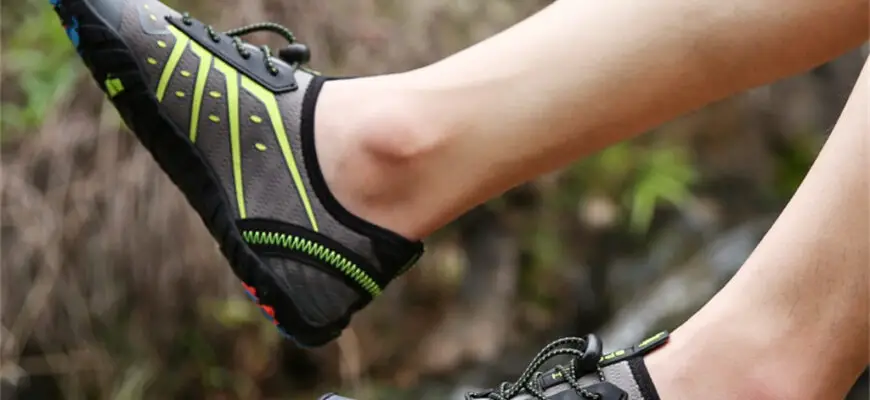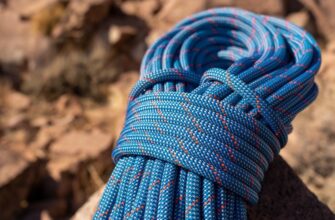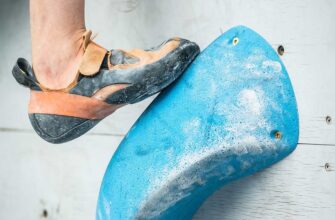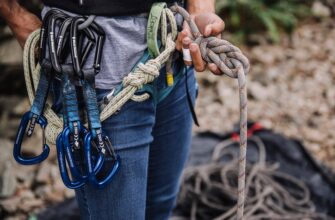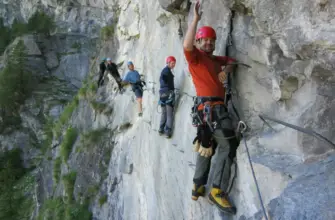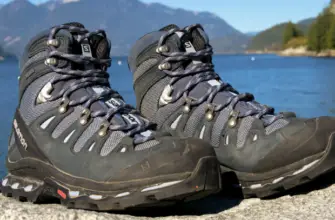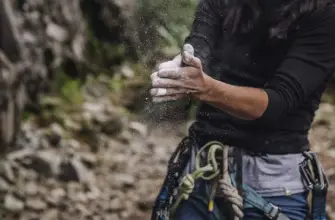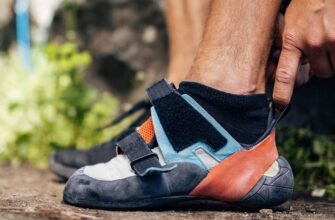The choice of climbing equipment is one of the most important decisions. There are many factors to consider: climbing skills, financial availability, terrain, and more.
Buying high-quality shoes can be expensive. You can buy one pair of shoes and wear them for a very long time or buy new shoes regularly.
In this regard, the question arises: how to extend the life of your climbing shoes and how long do climbing shoes last?
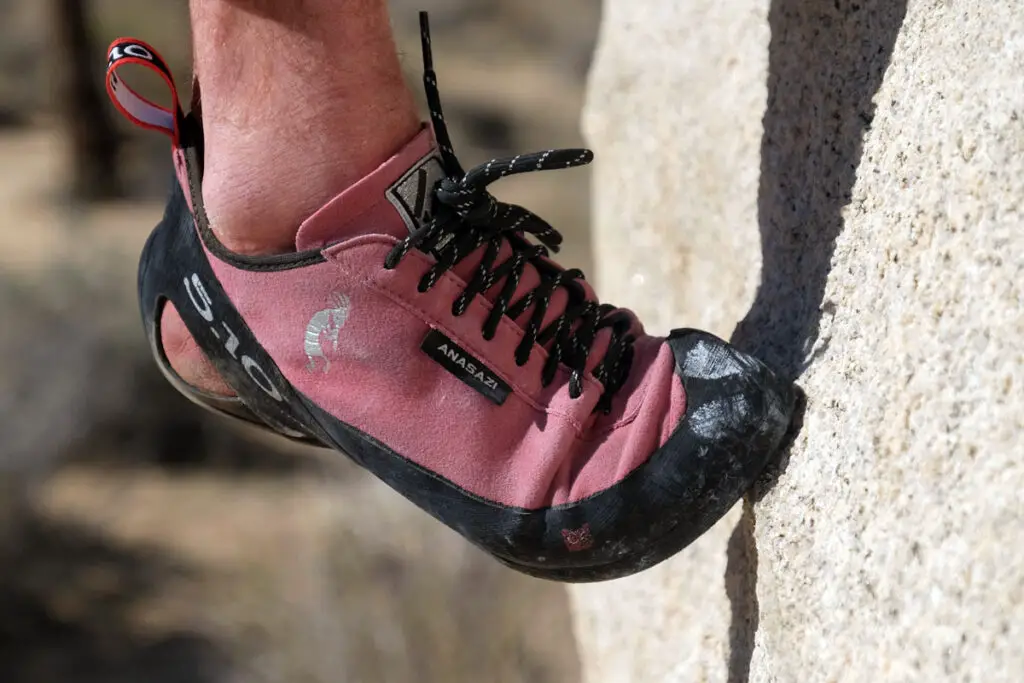
Let’s look at what affects how long climbing shoes remain in good condition, a few tips for caring for climbing shoe, which parts of your climbing shoes might be damaged and why, and whether or not you should replace climbing shoes.
On average, assuming you climb once or twice a week, long climbing shoes should last up to more than 12 months.
Many things affect this. If you continue to have shoes repaired by a good master before they wear out, you can wear the same perfect pair for decades and don’t replace climbing shoes.
- Essentials of the climbing shoe: Rubber, Upper, The Rand, Overall Fit, and Quality
- The rubber
- The upper
- The rand
- Overall fit
- The quality
- What should be climbing shoes?
- 4 main signs that your climbing shoes are worn out
- Look at the rubber
- Worn rand
- Damaged sole and shoe toe
- Falling apart at the seams
- How to extend the life of your climbing shoes?
- Effect of climbing technique on climbing shoes
- Rock types
- Climbing Tips
- Tap + slide
- Watch, where you put your foot
- How often do rock climbing shoes need to be resoled?
- Buy new vs resole the climbing shoe
- FAQ
- How do I know if my climbing shoes are worn out?
- How often do climbing shoes need to be resoled?
- Conclusion
Essentials of the climbing shoe: Rubber, Upper, The Rand, Overall Fit, and Quality
The rubber
The climbing rubber soles material of climbing shoe often gets the most damage. Naturally, this is a softer material that helps the shoe grip better on rocks.
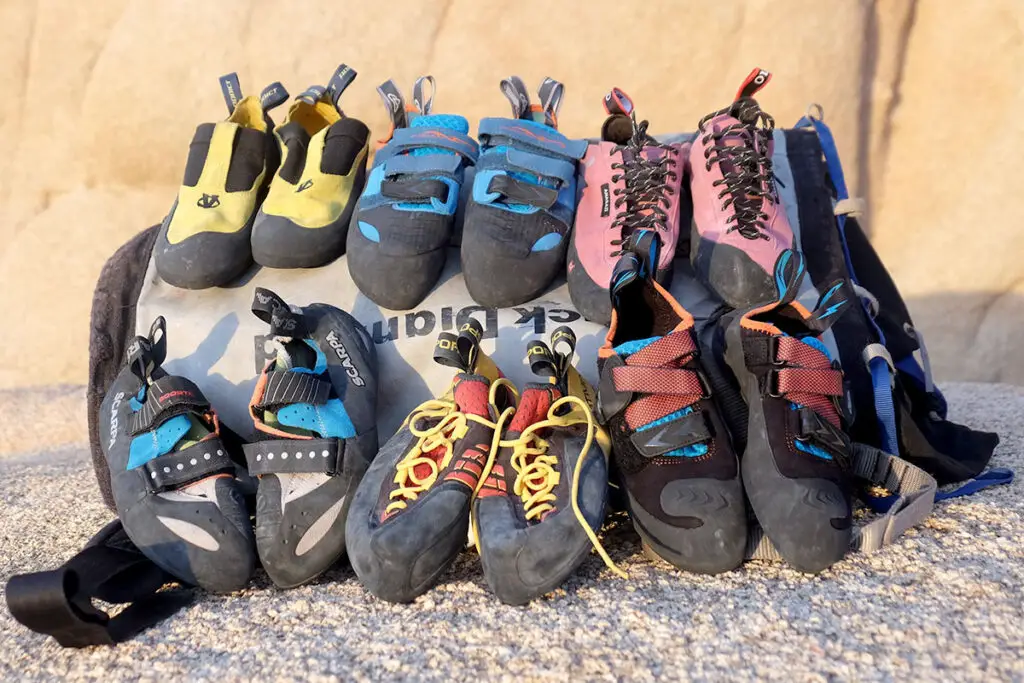
The softer rubber breaks down fairly quickly in contact with abrasive substances and you’re not sure how long do climbing shoes last.
The softer rubber sole can come off the fabric and poor-quality seams can fray. The such climbing shoe can be saved by minor repairs, extending their service life. Otherwise, it is better to buy new pair.
The upper
The upper part of the climbing shoe is rarely damaged, but it can separate from the upper fabric (delaminate). In this case, it is better to replace the pair immediately.
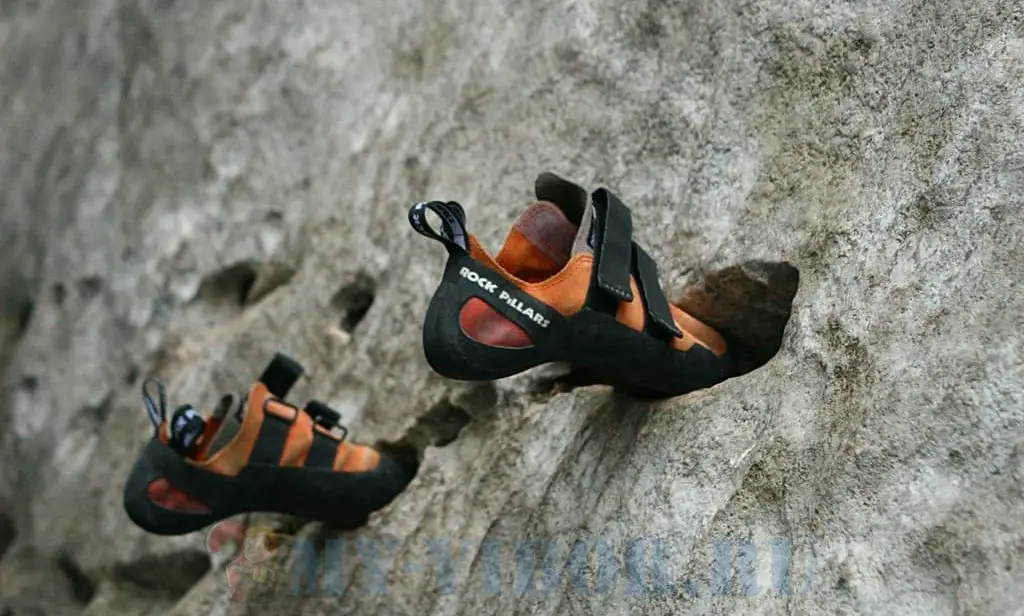
This part is made of either synthetic or leather material, holding everything together and holding it together. This is attached to the leg through straps, laces, or elastic bands.
The rand
Climbing shoe rand is another important part. This is a thick layer that wraps around the toe of a climbing shoe, located between the sole and the upper.
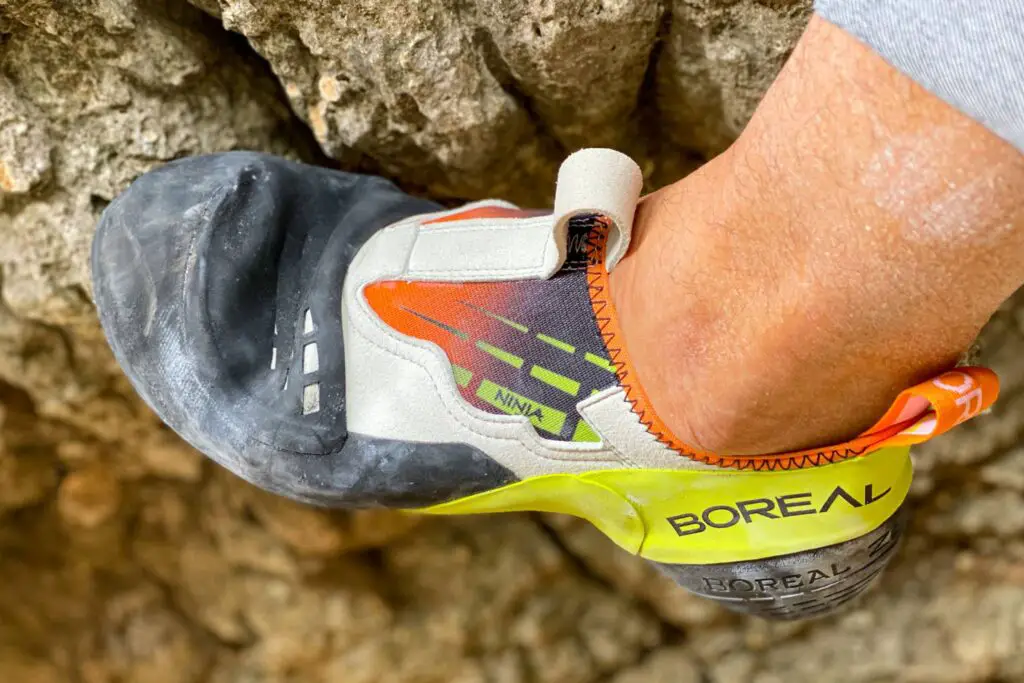
The rand is thinner and softer than the hard rubber in the outsole of the shoe. Once a hole appears in the rand, the shoe is in danger of destruction and needs the rand resole.
As the rand wears out from use, a hole forms in the inside of the shoe, which begins to wear out if use continues.
If the gap is small, you can use a thin sticky rubber toe cap to fix the problem.
It’s good to note that while rand repairs are easy to fix, they can change the shoe’s structure and reduce the number of future hikes your climbing shoe can handle.
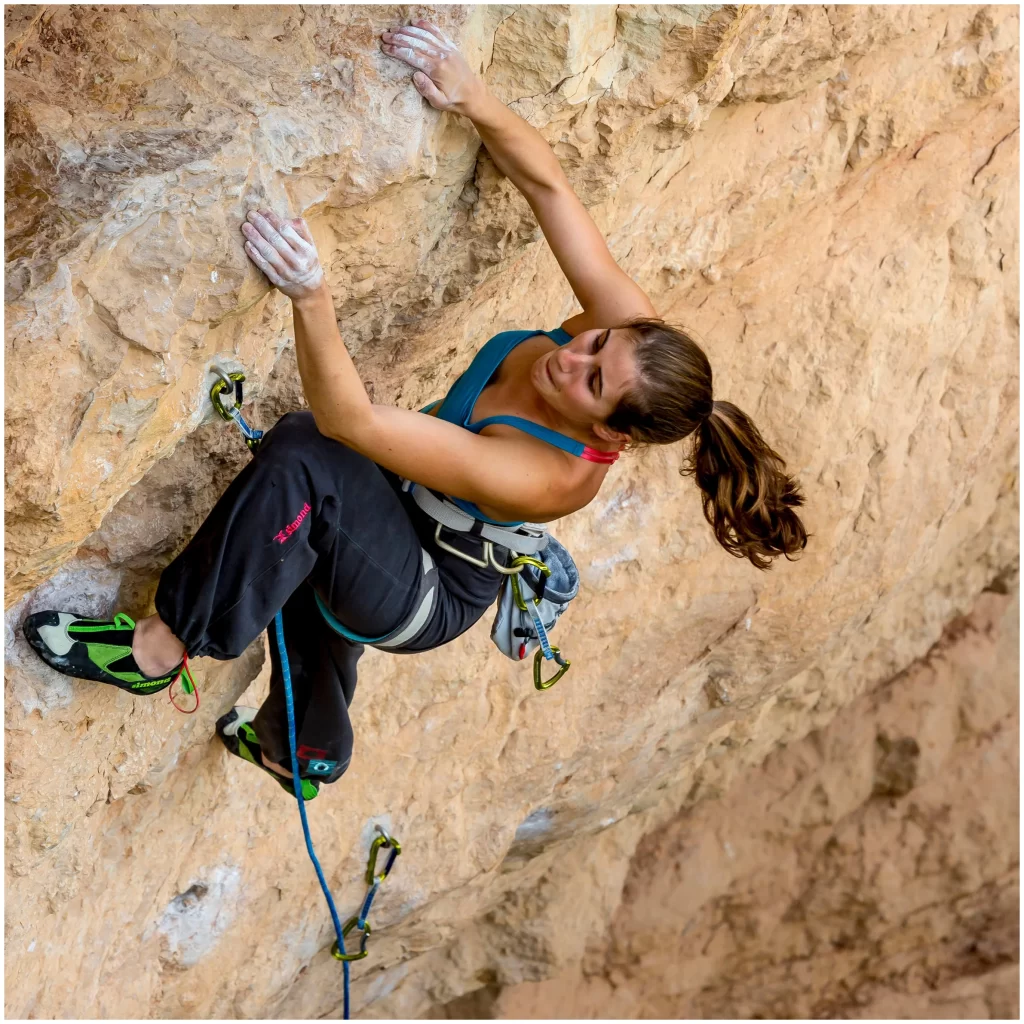
Usually, only one climbing rand can be repaired in a shoe’s lifetime. It’s best not to wait until rand is completely worn out to repair or replace your climbing shoes.
Overall fit
You will often need more than one favorite pair of shoes if you are involved in multiple climbing styles. For example, bouldering, hiking, and rock climbing require very different shoes if you want to do it right.
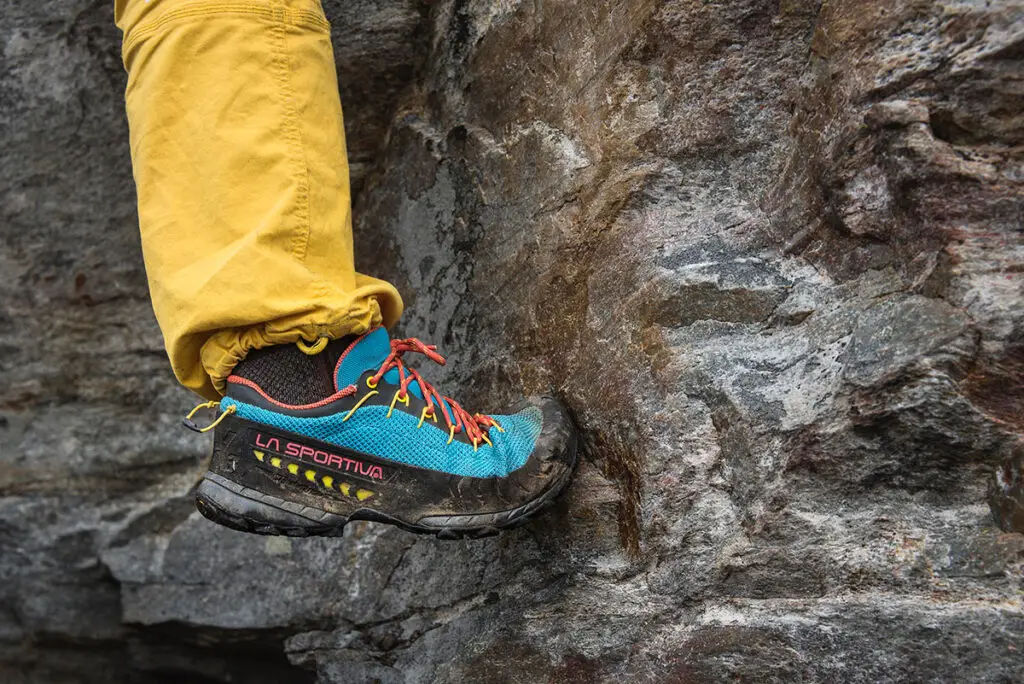
Aggressive shoes are designed for difficult overhangs, sport climbs, and bouldering because the curved down shape puts stress on the toe box and increases foot flexibility.
These climbing shoes usually have most wear near the big toe.
Stickier rubber and thinner soles provide better grip and feel but cause more friction on the toe rubber. This can lead to the climbing shoes having to be changed more often.
The quality
The quality also affects climbing shoes wear and how often you need to replace climbing shoes. Lower-quality climbing shoes use an outer rubber that loses shape faster.
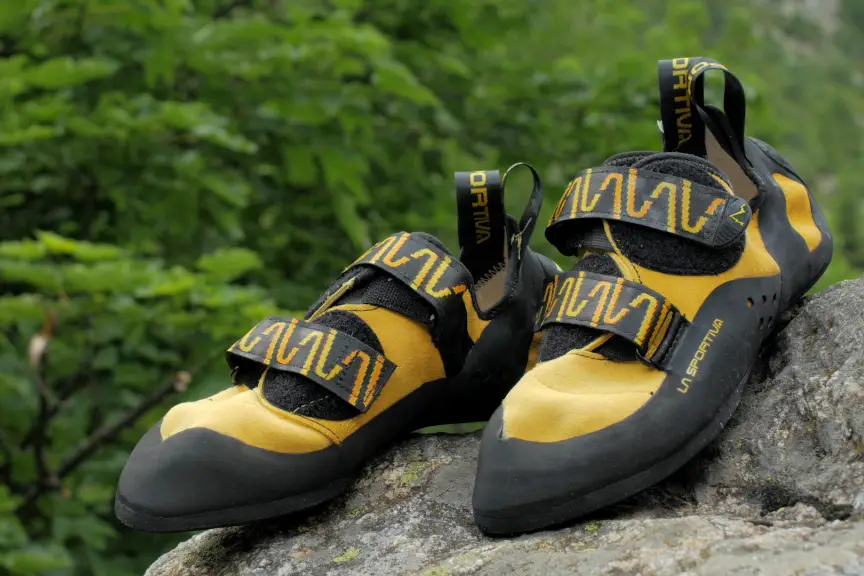
The combination of poor-quality rubber and seams can cause chafing, blistering, and hot spots on the user’s legs, which is highly undesirable.
The quality of your climbing shoes is another important factor to consider when purchasing climbing shoes. If you buy low-quality new climbing shoes, it can be sure that your climbing experience will be poor.
In addition, the product can be damaged during climbing, and if it survives, it is unlikely to last for a long time.
If your climbing shoes are made of poor-quality material, over time you will start to notice tears or excessive stretching.
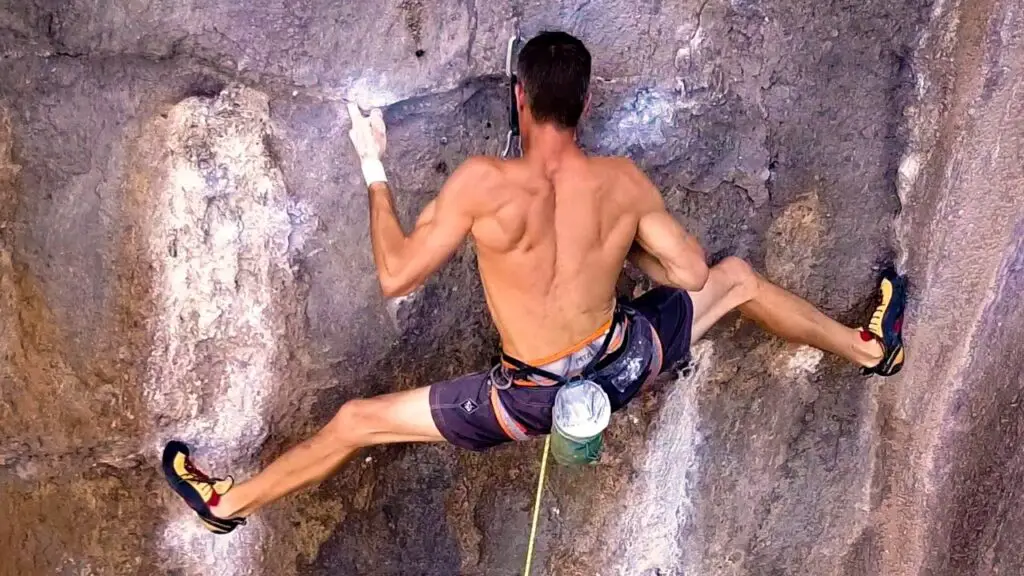
It is best to buy high-quality and expensive shoes even if you’re the average climber. This is especially true if you plan to climb regularly several times a week.
Choosing the right quality pair of shoes for your feet shape and climbing style is essential to prevent excessive wear and tear and ensure your climbing shoes last.
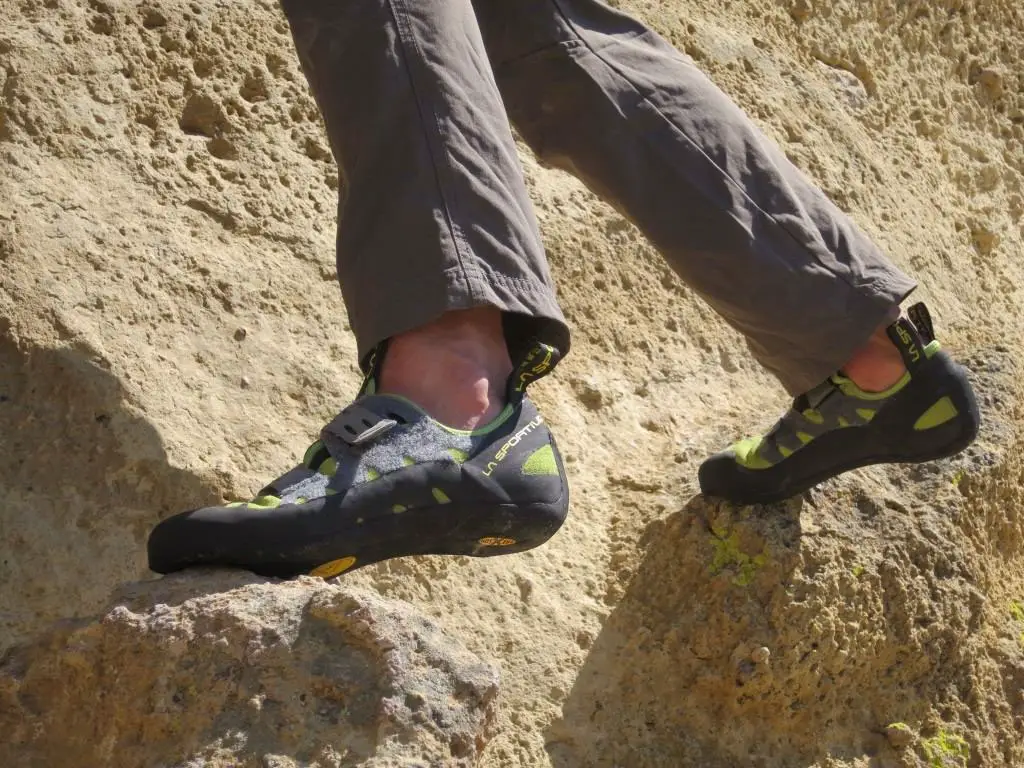
There are many manufacturers of climbing shoes. Among those who have established themselves as quality manufacturers, it is worth highlighting: Scarpa, La Sportiva, Tenaya, Evolv, and Unparallel.
These manufacturers, of course, are not the only ones who produce high-quality climbing shoes, but they are mentioned most often.
What should be climbing shoes?
Some people like their shoes to be tight, while others prefer a looser fit. It also depends on the type of rock climbing you will be doing.
If you’re going to be doing mostly gym climbing, you might want your shoes to be a little more comfortable so you can climb for longer periods without feeling too sore.
In general, it’s best to err on the side of a snug fit because the shoe will stretch over time.
Of course, you don’t want your rock climbing shoes to be so loose that they fall off your feet as you climb. And you also don’t want them to be so tight that they cut off circulation or cause you a lot of pain.
4 main signs that your climbing shoes are worn out
Look at the rubber
The rubber wears out, exposing most of the rand. The rubber starts to look glossy and no longer has a matte black look. If your shoes have had their soles changed a few times already, replacing them with a new pair of climbing shoes would be the best option.
Worn rand
A broken rand can lead to further damage or even a hole in the upper of the shoe. This is a sign of old pair of shoes. There is a need for rand repair, but if this is too much damage, it is best to replace it.
Damaged sole and shoe toe
Careful use will allow you to increase the amount of time you can use your favorite shoes before you need a new pair. A damaged sole can always be repaired, but only if the rand is not severely torn.
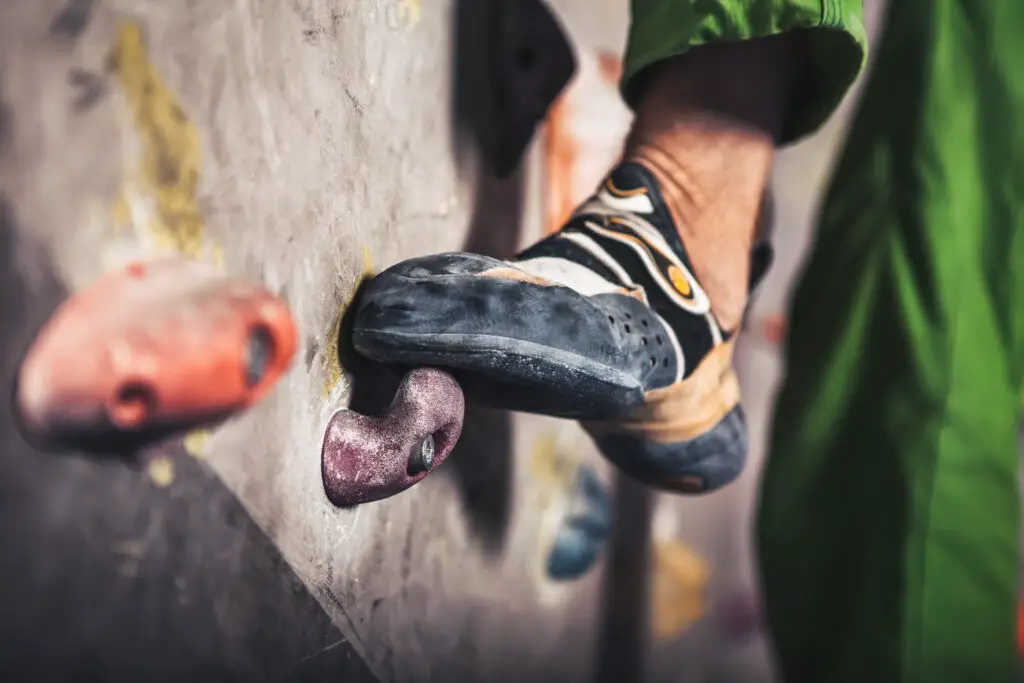
The area around the toe end, along the edges of your climbing shoes, wears out the fastest. If this part of the shoe is damaged, you will soon need a new climbing shoe or there is a need for them to shoes resoled.
Falling apart at the seams
The glue and seams hold all parts of the climbing shoes together, including the toe, sole, rand, and upper. If this happens, the shoes can be laminated, which will eliminate this problem, but if you laminate more than twice, you can be sure that climbing shoes last their last day.
How to extend the life of your climbing shoes?
- Use big toe pads or boot guards to help protect the toe and sides of the shoe from abrasion.
- Store them properly: when not in use, store shoes in a cool, dry place out of direct sunlight.
- Change pair: If you have more than one pair of long climbing shoes, change them so that each pair has a break between climbs. This will help to prevent too much wear on either pair.
- Keep them clean: Remove dirt or debris from the surface of the shoe with a soft brush. Wash shoes in cool water with mild soap. Do not use hot water or harsh detergents as they may damage the material.
- You can keep your hiking shoes clean by using a small hand towel or bar towel. This can be used to remove any surface dirt that may have accumulated on shoes.
- There are many different styles on the market, so knowing which one is right for you is important. Purchasing the wrong shoes for work can result in more wear and tear on the shoes where they weren’t intended.
- For climbing shoes last more extended period, it’s in your best interest to only use them while climbing and use completely different shoes for other outdoor activities.
- It is up to the climber to decide whether to wear socks with shoes or stay bare feet. Assuming you decide to wear socks with your climbing shoes, you might be wondering how long climbing shoes last.
- To protect climbing shoes, be sure to store them in a shoe bag.
- Taking care is important if you want your climbing shoes last you as long as possible.
Effect of climbing technique on climbing shoes
It is important to understand that how long do climbing shoes last depends on the type of climbing you do. If you drag your feet towards the nearest wall hold, you wear out the sole of your boot much faster.
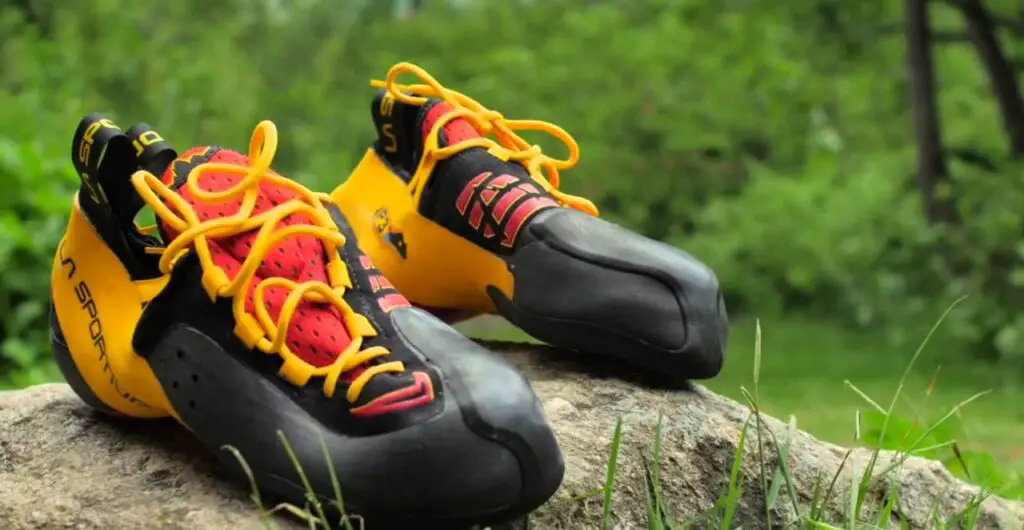
If you tend to put your foot above the toe and slide down to get the right foot placement, you will wear out the rubber on the sole of your climbing shoe faster. Whether you’re climbing indoors or outdoors, the climbing surface can affect the lifespan of rubber, especially if you’re dragging or sliding into holds.
Outer surfaces are inherently rough, which has a positive effect on road holding. However, the rough surface of the rocks increases the wear rate of climbing shoe rubber, which shortens the life of the shoe.
When climbing indoor walls, you can notice that the wall surface is not exactly smooth and has a slightly rough, sandpaper-like texture that is meant to help you get the same grip you would on outdoor surfaces. As with outdoor surfaces, this can increase the shoes’ wear and tear on your shoe rubber, especially when combined with poor technique.
Rock types
Different types of rubber on climbing shoes generally work better on different types of rock. Indoor shoes with very soft rubber, often used on textured surfaces, can only last 3 months before the sole needs repair.
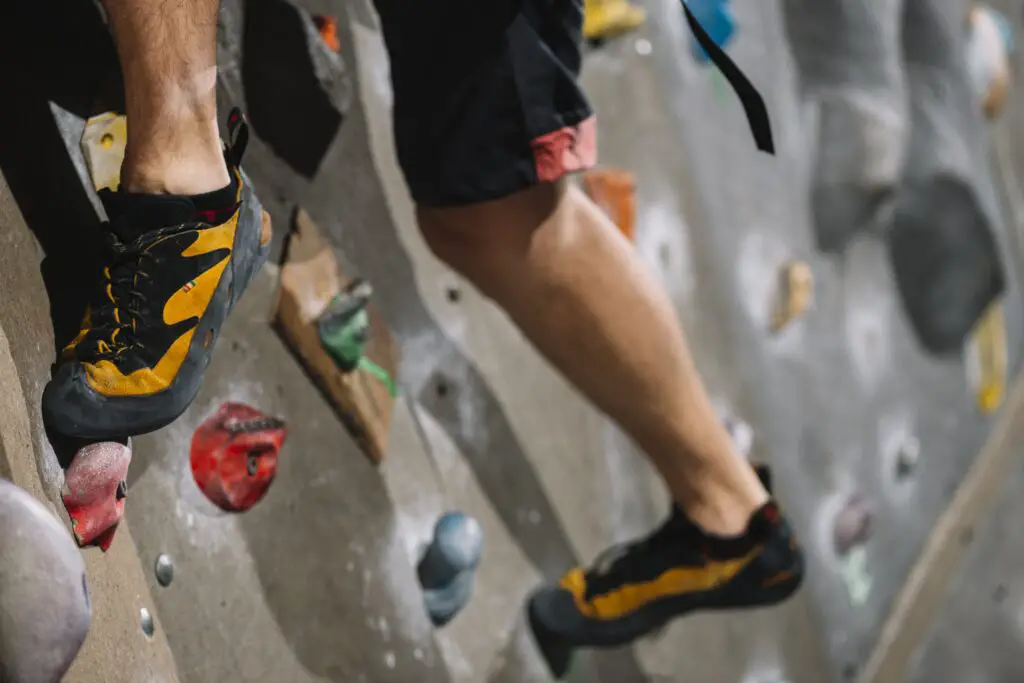
Granite, like material found in Yosemite, tends to be smoother and has less support at the edges. Harder rubber is better for this and can last quite a long time.
There are much softer, more porous rocks or sandstone found at Fontainebleau in France. They tend to rely a lot more on rubbing and smearing.
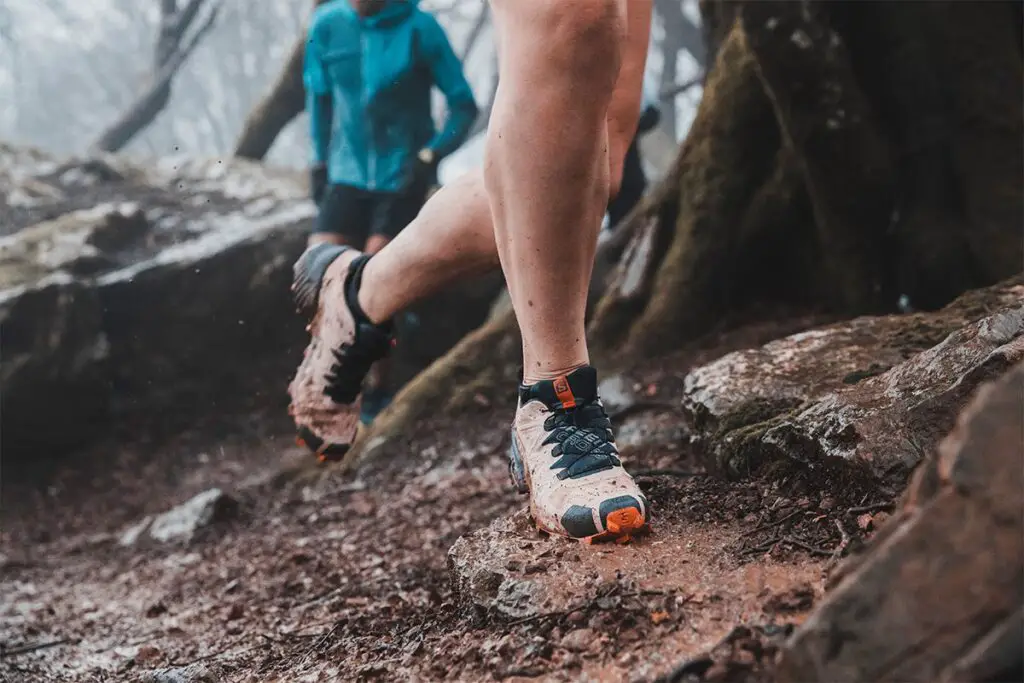
The soft rubber helps with this, but slipping off those textured lugs all day long wears down the rubber and leather quickly.
Climbing Tips
Plan and put your toe in the right place the first time. Changing position wastes your energy and damages rubber.
Tap + slide
Tapping the foot well above the toe and scratching against the wall is common for beginner climbers. It kills shoes faster than anything else.
Watch, where you put your foot
Scraping is usually seen as bouncing your foot up the wall. This can help with balance in difficult movements, but the better body position likely makes it unnecessary.
How often do rock climbing shoes need to be resoled?
There is no limit to the number of times your climbing shoes can be resoled. It is possible to repair your shoes even more than 5 times.
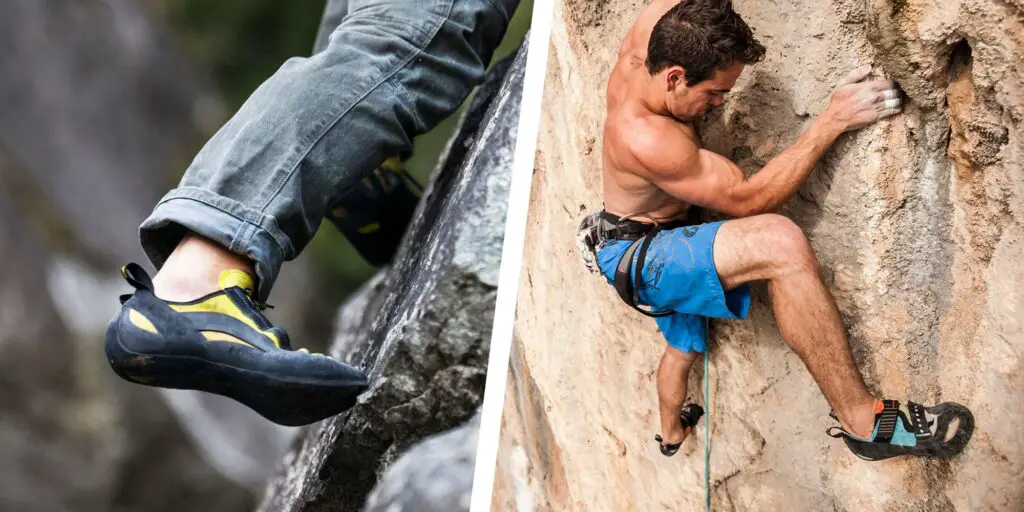
The main thing is to identify the causes of wear and tear of rubber and soles in time before a critical moment arrives.
It is also important to pay attention to other parts of your pair of climbing shoes, as it will be too late to fix them, and the damage will be irreparable.
There are different ways to solve problems. The best method will ultimately depend on the type of shoe you have and how much wear and tear you have. If you have shoes with synthetic soles, you can simply glue the new sole on with a shoe repair kit.
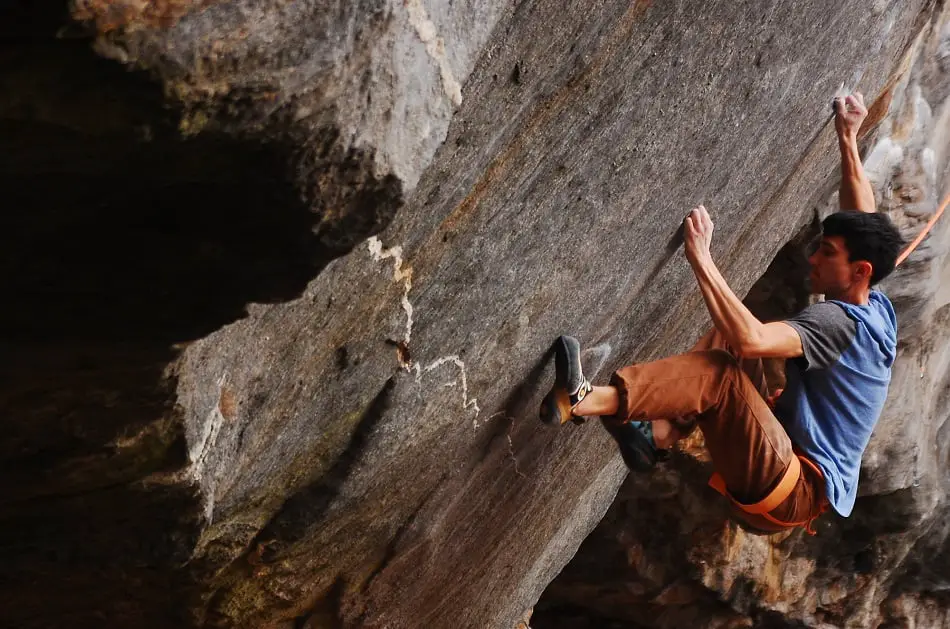
If you have shoes with leather soles, you will need to attach a new rand first before you can glue on the new sole. If you have shoes with significant wear, you may need to repair the entire sole first before you can attach the new one.
This involves removing the old sole, cleaning any debris, and then attaching the new rand and sole with shoe repair glue. When the glue dries, you will need to cut the new sole to the correct size.
Regardless of which method you use, it’s important that the new sole is properly attached and that the shoe isn’t too tight, as this can cause problems.
Buy new vs resole the climbing shoe
For everyone, this is a personal choice. There is always a question of price. If your pair is in a deplorable state, then it is hardly worth spending time on costly and time-consuming repairs.
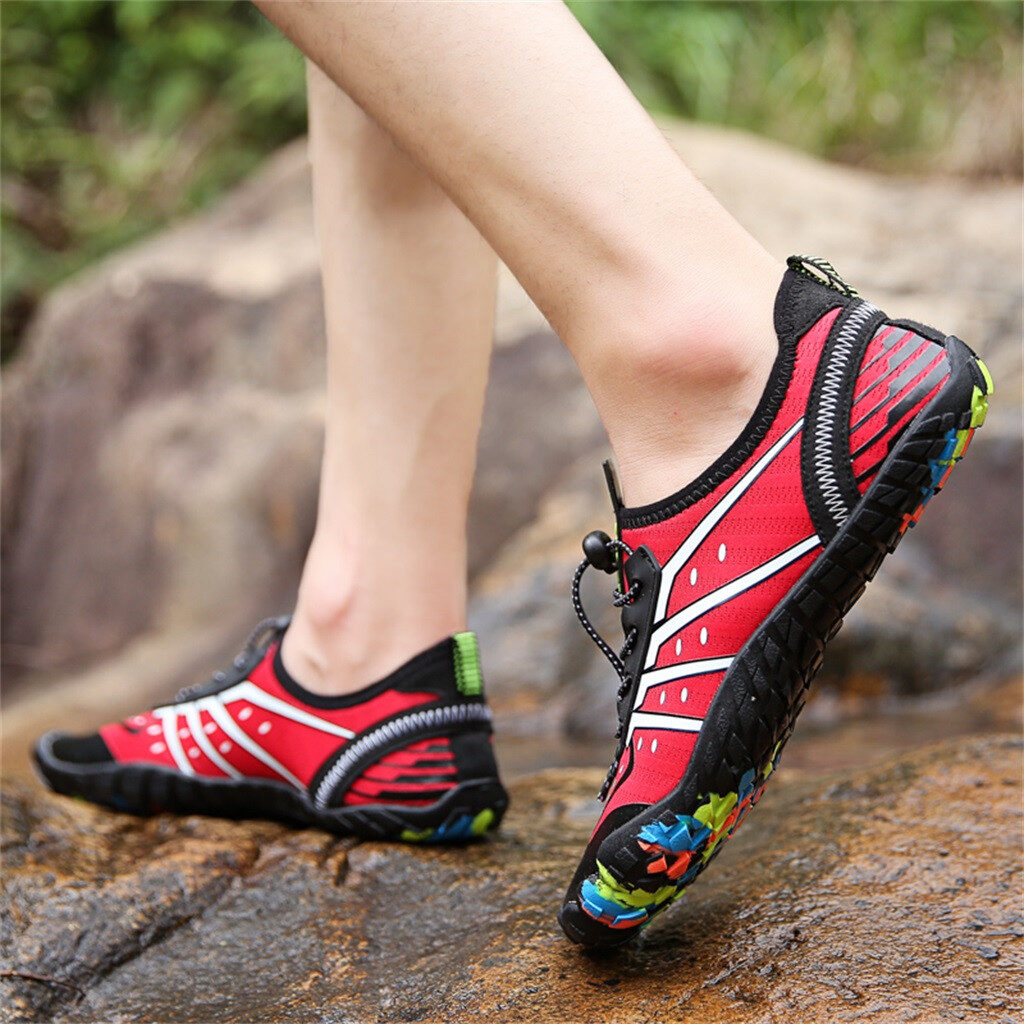
The cost is an important aspect to consider. Shoes should be great for both indoor and outdoor use. It is also important to note that depending on the level of the climber, many models may not be designed to create intense and difficult climbing routes.
FAQ
How do I know if my climbing shoes are worn out?
There are basic signs that your rock climbing shoes are worn out and how long do climbing shoes last:
- The rubber starts to look glossy and no longer has a matte black look. Thus, the rubber is very worn out, then it is time for climbing shoes resoled.
- A broken rand is a sign of an old pair of shoes, and resole will allow you to increase the amount of time you can wear your favorite shoes before you need a new pair. Remember that the area around the toe box, along the edges of your climbing shoe, wears out the fastest.
- Pay attention to the glue and the seams of the shoe hold all parts of the climbing shoe together, including the toe, sole, rand, and upper.
How often do climbing shoes need to be resoled?
The number of times your rock shoes can be changed is unlimited. The main thing is to identify the reasons for the wear in time before the critical moment comes.
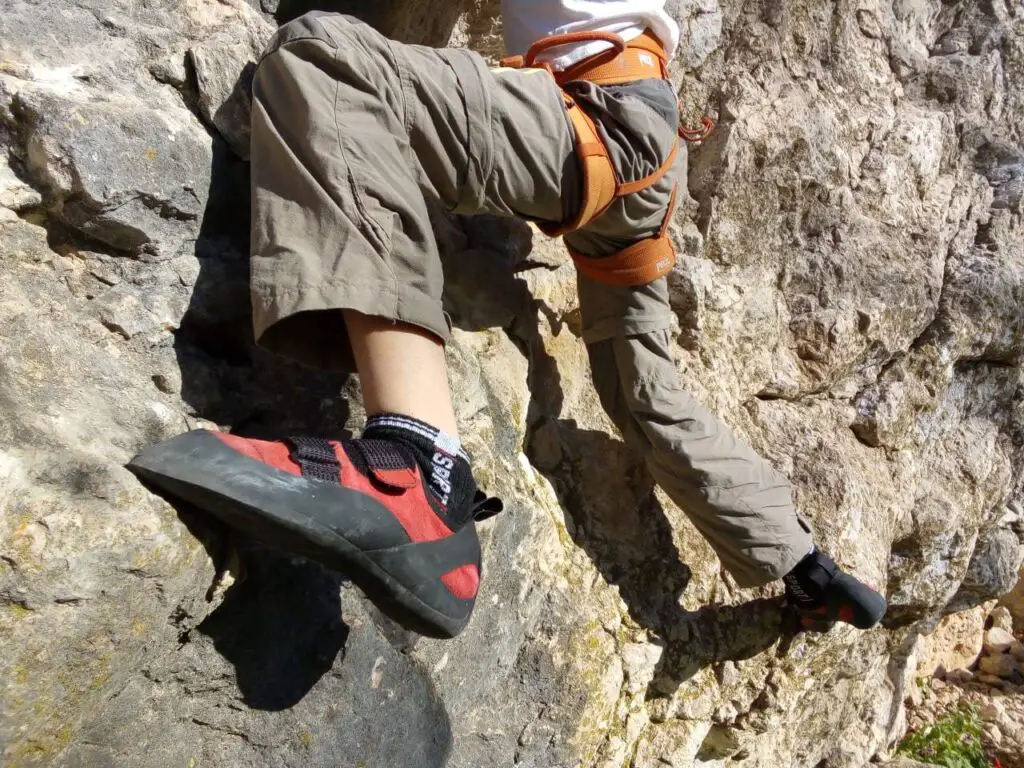
The best method will ultimately depend on the type of shoe you have and how much wear you have on it. The new sole must be properly attached.
Conclusion
The longevity of your climbing shoes depends on many factors. Even if you use the right climbing techniques and take care of your shoes regularly, sometimes you may need to resole climbing shoes.
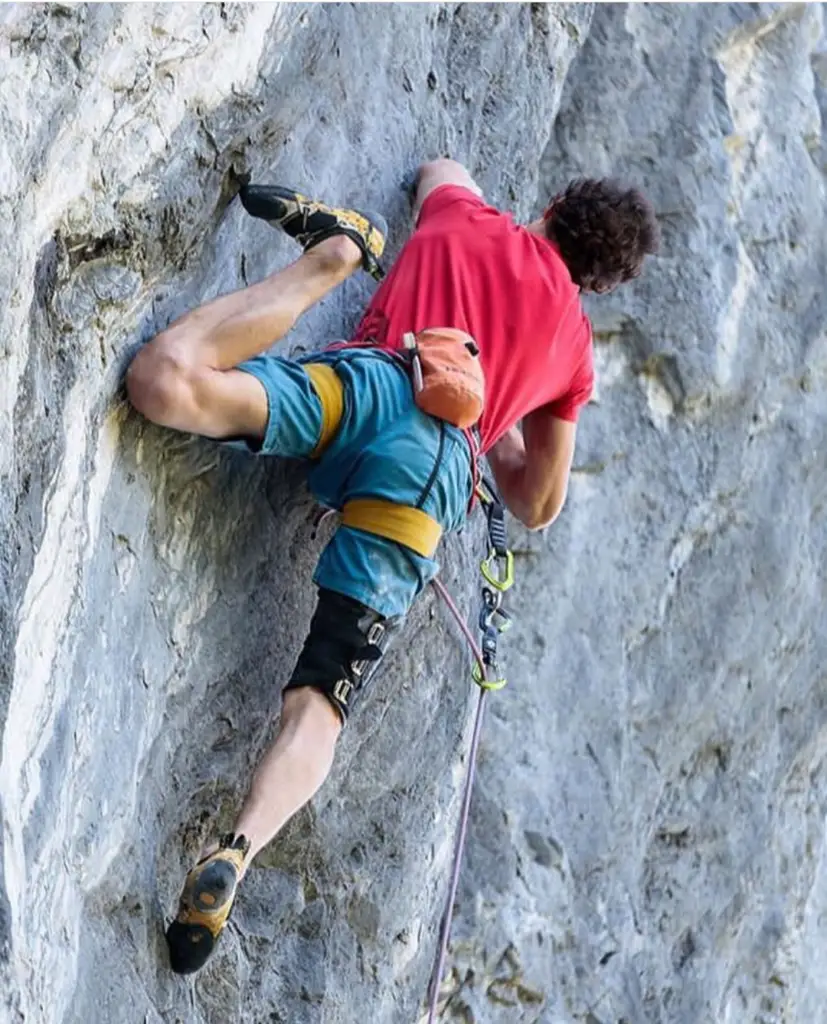
To ensure the durability of the shoe, you must ensure that you use proper footwork techniques while climbing so as not to scratch your climbing shoes unnecessarily.
Although it may be difficult for a beginner, as you will have poor footwork technique in the beginning. If you pay more attention to this while climbing, it will greatly help to increase the life of your shoes.
And as you start getting better and more experienced, you will find that your climbing shoes will last longer. However, if repairs need to be made, it is important to notice the faults on your shoes in time to quickly fix them. Thus, your climbing shoes can serve you for a long time.

